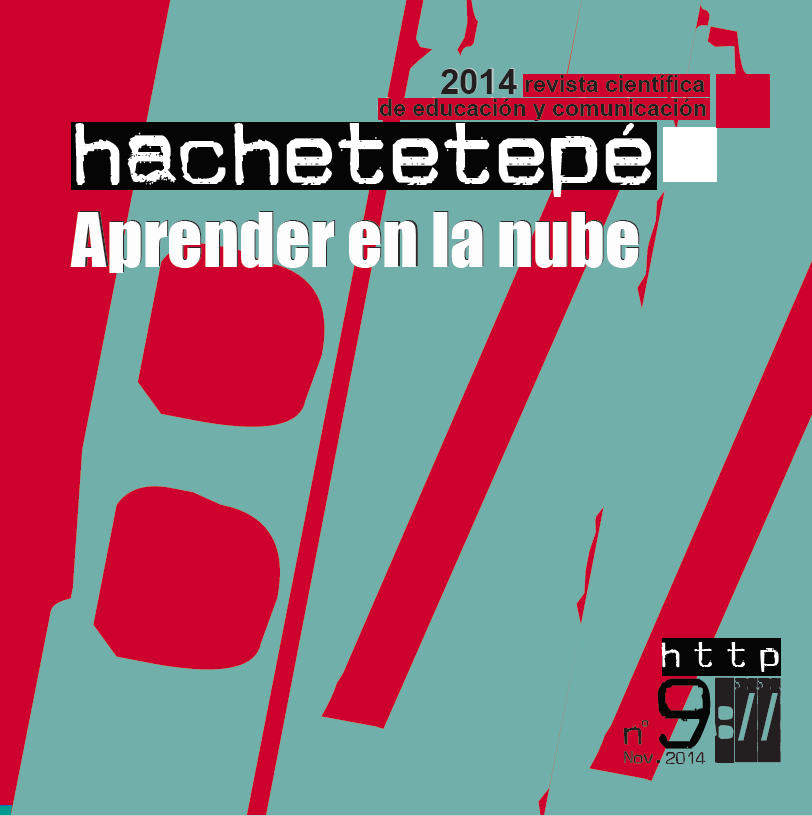El modelo PCC: participación constructiva y colaborativa online

Información
Resumen
Este trabajo describe un modelo de didáctica online para del desarrollo de cursos, con el fin de obtener una participación activa y constructiva por parte de estudiantes universitarios. El modelo, denominado Participación Constructiva y Colaborativa (PCC), considera el aprendizaje como una co-construcción del conocimiento y tiene como objetivo acercar a los estudiantes para elaborar nuevas ideas mediante la realización de productos ya sea individuales o de grupo. A tal fin, se prevee una alternancia de actividades individuales y de grupo, siempre con el objetivo de hacer construir productos. De este modo se aprovecha el potencial de interacción colaborativa y contructiva de la red y de las diferentes posibilidades del trabajo online. El modelo ha sido elaborado en el ámbito diferentes cursos universitarios. Será presentado describiendo en primer lugar las teorías tomadas como inspiración, luego las actividades realizadas en linea y, por último, algunos análisis que demuestran su eficacia.
Palabras clave
Descargas
Cómo citar
Licencia

Esta obra está bajo una licencia internacional Creative Commons Atribución-NoComercial-SinDerivadas 4.0.
Aquellos autores/as que tengan publicaciones con esta revista, aceptan los términos siguientes:
- Conservarán sus derechos de autor y garantizarán a la revista el derecho de primera publicación de su obra, el cual estará simultáneamente sujeto a la Licencia de reconocimiento de Creative Commons. Se pueden copiar, usar, difundir, transmitir y exponer públicamente, siempre que se cite la autoría, la url, y la revista, y no se usen para fines comerciales. No se permite hacer obras derivadas.
- Podrán adoptar otros acuerdos de licencia no exclusiva de distribución de la versión de la obra publicada (p. ej.: depositarla en un archivo telemático institucional o publicarla en un volumen monográfico) siempre que se indique la publicación inicial en esta revista.
- Difundir su obra a través de Internet (p. ej.: en archivos telemáticos institucionales o en su página web) una vez que el manuscrito sea aceptado, lo cual puede producir intercambios interesantes y aumentar las citas de la obra publicada. (Véase El efecto del acceso abierto)
Hachetetepé. Revista científica de educación y comunicación no cobra honorarios ni por la presentación de manuscritos ni por la publicación de sus artículos.
Citas
Anderson, T., y Shattuck, J. (2012). “Design-based research: A decade of progress in education research?” Educational Researcher, 41 (1); 16-25.
Aronson, E., y Patnoe, S. (1997). The jigsaw classroom: Building cooperation in the classroom(2nd ed.). New York: Longman.
Bakhtin, M. (1981). The Dialogic Imagination. Austin, TX: University of Texas Press.
Bateson, G. (1972). Steps to an Ecology of Mind. Londres: Chandler.
Brown, A. L., y Campione, J. C. (1990). “Communities of learning or a context by any other name”.En Kuhn, D. (Ed.), Contributions to human development, 21; 108-126.
Bruner, J. (1996). The culture of Education. Harvard University Press.
Cole, M. (1990). “Cultural Psychology: A once and future discipline?”. In J. J. Berman (Ed.), Nebraska symposium on motivation, 1989: Cross-cultural perspectivas. Lincoln: University of Nebraska Press; 132-161.
Cole, M. (1995). “From Cross-Cultural to Cultural psychology”. Swiss Journal of Psychology – Schweizerische Zeitschrift für Psychologie – Revue Suisse de Psychologie, 54 (4); 262-276.
Cole, M. (1996). CulturalPsychology: A Once and Future Discipline. Cambridge: Harvard University Press.
Engeström, Y. (1987). Learning by expanding. Helsinki: Orienta-konsultit.
Gergen, K. J. (1985). “The social constructionist movement in modern psychology”. American psychologist, 40 (3); 266-275.
Gergen, K. J. (1999). An invitation to social construction. Londres: Sage.
Gergen, K. J. (2001). “Psychological science in a postmodern context”. American Psychologist, 56; 803-813.
Hakkarainen, K. (2003). “Progressive inquiry in a computer-supportedbiologyclass”. Journal of Research in Science Teaching, Vol. 40, 10; 1072–1088.
Hutchins, E. (2001). “Distributed cognition”. In Smelser, N. J. y. Baltes, P. B (Eds.), International encyclopedia of the social & behavioral sciences. Amsterdam: Elsevier; 2068–2072.
Impedovo, M. A., Ritella, G., y Ligorio, M. B. (2013). “Developing Codebooks as a New Tool to Analyze Students’ ePortfolios”. International Journal of ePortfolio, Vol. 3, 2; 161-176.
Lave, J. (1988). Cognition in practice: mind, mathematics and culture in everyday life. New York: Cambridge University Press.
Lave, J., y Wenger, E. (1998). Communities of Practice: Learning, Meaning, and Identity. New York: Cambridge University Press.
Lecusay, R., Rossen, L., y Cole, M. (2008). “Cultural-historical activity theory and the zone of proximal development in the study of idioculture”. Cognitive Systems Research, 9; 92-103.
Ligorio, M. B., Cacciamani, S. y Cesareni, D. (2006). Blended Learning: dalla scuola dell’obbligo alla formazione adulta. Roma: Carocci.
Ligorio, M.B., y Veermans, M. (2005). “Perspectives and patterns in developing and implementing international web-based Collaborative Learning Environments”. Computers & Education, 45, 3; 271-275.
Palincsar, A. S., y Brown, A. L. (1984). “Reciprocal teaching of comprehension-fostering and comprehension-monitoring activities”. Cognition and Instruction, 1 (2); 117-175.
Potter, J. (1996). Representing Reality. Discourse, Rhetoric and Social Construction. In J.E. Richardson (Ed.), Handbook of qualitative research methods for psychology and the social sciences. Leicester: BritishPsychological Society; 136-178.
Scardamalia, M. y Bereiter, C. (2006). Knowledge building: Theory, pedagogy, and technology. In K. Sawyer (Ed.). Cambridge Handbook of the Learning Sciences. New York: Cambridge University Press; 97-118.
Schellens, T., Van Keer, H., y Valcke, M. (2005). “The impact of role assignment on knowledge construction in asynchronous discussion groups: a multilevel analysis”. Small Group Research, 36; 704-745.
Shotter, J. (1993). Cultural Politics of Everyday Life: Social Constructionism, Rhetoric, and Knowing of the Third Kind. Milton Keynes: Open University Press.
Suchman, L. (1987). Plans and situated actions. Cambridge: Cambridge University Press.
Topping, K. (2005). “Trends in Peer Learning. Educational Psychology”. 25 (6); 631–45.
Vygotsky, L. S. (1929). “The problem of the cultural development of the child”. II. Journal of Genetic Psychology, 34; 414–434.
Vygotsky, L. S. (1978). Mind in society. Cambridge: Harvard University Press.
Wenger, E. (1998). Communities of practice. Learning meaning and identity. Cambridge University Press, Cambridge.

